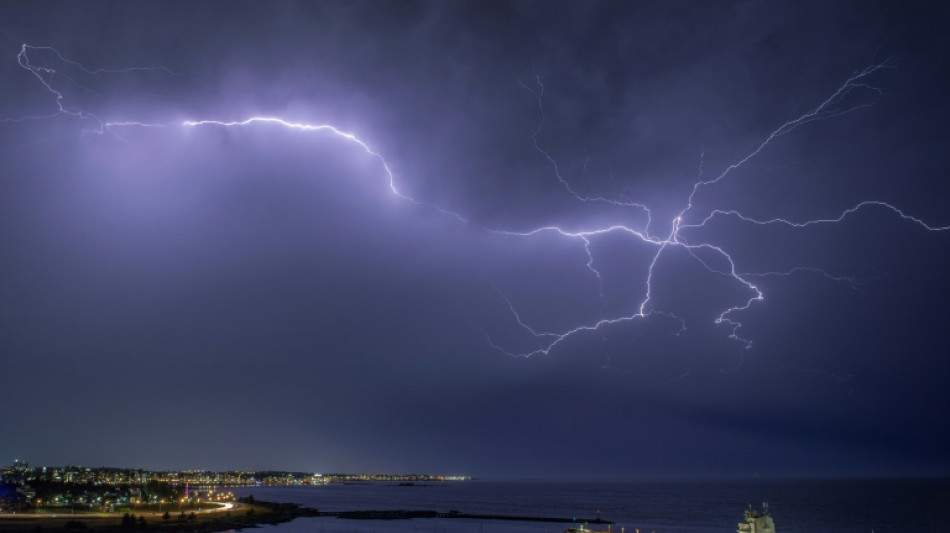
-
 Root in Ponting territory with 41st Test century at 5th Ashes Test
Root in Ponting territory with 41st Test century at 5th Ashes Test
-
South Korea's Lee to meet Xi with trade, Pyongyang on the agenda

-
 Messi's Miami sign Canada goalkeeper St. Clair
Messi's Miami sign Canada goalkeeper St. Clair
-
Pistons top Cavs as Pacers' NBA misery continues

-
 Gonzalo treble helps Real Madrid thrash Betis, Atletico hopes dented
Gonzalo treble helps Real Madrid thrash Betis, Atletico hopes dented
-
Djokovic quits players' union he co-founded

-
 Anne Frank's step-sister, Holocaust survivor Eva Schloss dies
Anne Frank's step-sister, Holocaust survivor Eva Schloss dies
-
France's Le Garrec inspires La Rochelle to Toulon rout

-
 Hosts Morocco reach AFCON quarter-finals as Cameroon knock out South Africa
Hosts Morocco reach AFCON quarter-finals as Cameroon knock out South Africa
-
Inter Milan reclaim Serie A summit

-
 Atletico title hopes dented in Real Sociedad draw
Atletico title hopes dented in Real Sociedad draw
-
Doue, Dembele light up first Paris derby in over 35 years

-
 Swiss grieve as all fire victims identified -- half of them under 18
Swiss grieve as all fire victims identified -- half of them under 18
-
Panthers advance to NFL playoffs after Falcons beat Saints

-
 Cameroon end South Africa hopes to reach AFCON last eight
Cameroon end South Africa hopes to reach AFCON last eight
-
'A gift' to be back, says Rodri despite Man City stumble

-
 Colombian guerrillas vow to confront US 'imperialism'
Colombian guerrillas vow to confront US 'imperialism'
-
Morocco lose injured playmaker Ounahi for rest of AFCON bid

-
 Trump threatens new Venezuela leader after raid to seize Maduro
Trump threatens new Venezuela leader after raid to seize Maduro
-
Man City title hopes hit by managerless Chelsea

-
 Man City held by Chelsea in major title blow, Liverpool denied in Fulham thriller
Man City held by Chelsea in major title blow, Liverpool denied in Fulham thriller
-
Managerless Chelsea dent Man City title hopes

-
 Ekitike's absence in Fulham draw leaves Slot with threadbare options
Ekitike's absence in Fulham draw leaves Slot with threadbare options
-
Delcy Rodriguez: From Maduro's 'tigress' to acting Venezuelan president

-
 Frank defends Johnson sale after Spurs jeered in Sunderland draw
Frank defends Johnson sale after Spurs jeered in Sunderland draw
-
France, UK conduct joint strikes against IS in Syria

-
 Amorim tells Man Utd hierarchy to 'do their job'
Amorim tells Man Utd hierarchy to 'do their job'
-
Diaz sends Morocco to AFCON quarter-finals

-
 Amorim takes heart from Man Utd character in battling Leeds draw
Amorim takes heart from Man Utd character in battling Leeds draw
-
Liverpool denied by late drama at Fulham, Man Utd held by Leeds

-
 Over 30 killed, several kidnapped in Nigeria
Over 30 killed, several kidnapped in Nigeria
-
Osaka wins after Raducanu pullout, Swiss book United Cup quarter-finals

-
 Liverpool held by Fulham after last-gasp Reed rocket
Liverpool held by Fulham after last-gasp Reed rocket
-
Gonzalo Garcia hits treble as Real Madrid thrash Betis without Mbappe

-
 Marseille crash to Ligue 1 defeat against Nantes
Marseille crash to Ligue 1 defeat against Nantes
-
Third 'Avatar' film passes the $1 billion mark worldwide

-
 US says ready to work with new Venezuelan authorities
US says ready to work with new Venezuelan authorities
-
Spanish protesters slam 'imperialist aggression' in Venezuela

-
 Italy's Brignone back training with Winter Olympics in sight
Italy's Brignone back training with Winter Olympics in sight
-
Beaten Shiffrin 'in awe' as Rast claims Kranjska Gora double

-
 Raw emotion as mourners pay tribute to Swiss fire victims
Raw emotion as mourners pay tribute to Swiss fire victims
-
New clashes in Iran as protests enter second week: rights groups

-
 Joshua makes first public comments since fatal crash
Joshua makes first public comments since fatal crash
-
Flights grounded in Greece after radio frequency loss

-
 Alarm and applause after US topples Maduro
Alarm and applause after US topples Maduro
-
114 killed in week of attacks in Sudan's Darfur: medical sources

-
 Napoli win at nine-man Lazio as Sarri makes rapid return
Napoli win at nine-man Lazio as Sarri makes rapid return
-
Cunha rescues Man Utd in draw with rivals Leeds

-
 'An enormous triumph," amputee Baumel wins Dakar Rally first stage
'An enormous triumph," amputee Baumel wins Dakar Rally first stage
-
South Korea's Lee visits China, hoping to sidestep Taiwan tensions


Thunderstorms are a 'boiling pot' of gamma rays, scientists find
Big thunderstorms continuously emit gamma rays that are undetectable from the ground, two studies said on Wednesday, upending what was previously thought -- and potentially pointing towards a clue in the mystery of how lightning is sparked.
Despite the fact that 40,000 thunderstorms generate more than eight million lightning strikes above our heads every day, they "remain poorly understood", physicist Joseph Dwyer said in an analysis of the new research in the journal Nature.
Normally when people think of gamma rays -- bursts of an incredibly high-energy form of light -- they are coming from out of this world, such as solar flares, exploding stars or black holes.
However in the 1990s, NASA satellites tasked with hunting down high-energy particles from such cosmic sources detected gamma rays coming from Earth.
Other than inside nuclear reactors, nothing on our planet had been thought capable of generating gamma rays.
Since then, two different types of gamma rays have been observed inside thunderstorms -- both invisible to the naked eye.
Gamma-ray glows can last for a few minutes over a region roughly 20 kilometres (12 miles) wide, while more powerful "flashes" last less than a millisecond.
"As it turns out, essentially all big thunderstorms generate gamma rays all day long in many different forms," Steven Cummer, a researcher at Duke University and a co-author of one of the studies, said in a statement.
- Bubbling cauldron of gamma rays -
To find out more about what is happening inside thunderstorms, the international team of researchers used an NASA ER-2 airplane.
The scientific aircraft, based the American U-2 spy plane, can fly more than twice as high as a commercial airliner, soaring far above storm clouds.
Over a month in 2023, the plane left a Florida air force based to fly at an altitude of 20 kilometres over active storms, capturing evidence that gamma radiation is much more common than had been thought.
The storms almost continuously generated gamma-ray glows for hours across thousands of square kilometres, all of which were closely linked to the most intense areas of the storm.
The storms resemble "a huge gamma-glowing 'boiling pot' in both pattern and behaviour," said the author of the first Nature study, which was authored by Martino Marisaldi of Norway's University of Bergen.
The second study revealed that glows could intensify into what it called "flickering" gamma-ray flashes. These could be the elusive "missing link" between glows and flashes, it added.
These observations "blur the line between these two types of emission, suggesting that gamma-ray glows often morph into intense pulses", Dwyer explained.
Lightning often follows these intense gamma ray emissions, which suggests they might play some role in sparking lightning strikes, according to the second study.
"How lightning is initiated inside thunderstorms is one of the greatest mysteries in the atmospheric sciences," Dwyer said.
"It is amazing that, more than two decades into the 21st century, Earth's atmosphere has enough surprises in store to motivate an entirely new line of research."
Ch.Havering--AMWN



